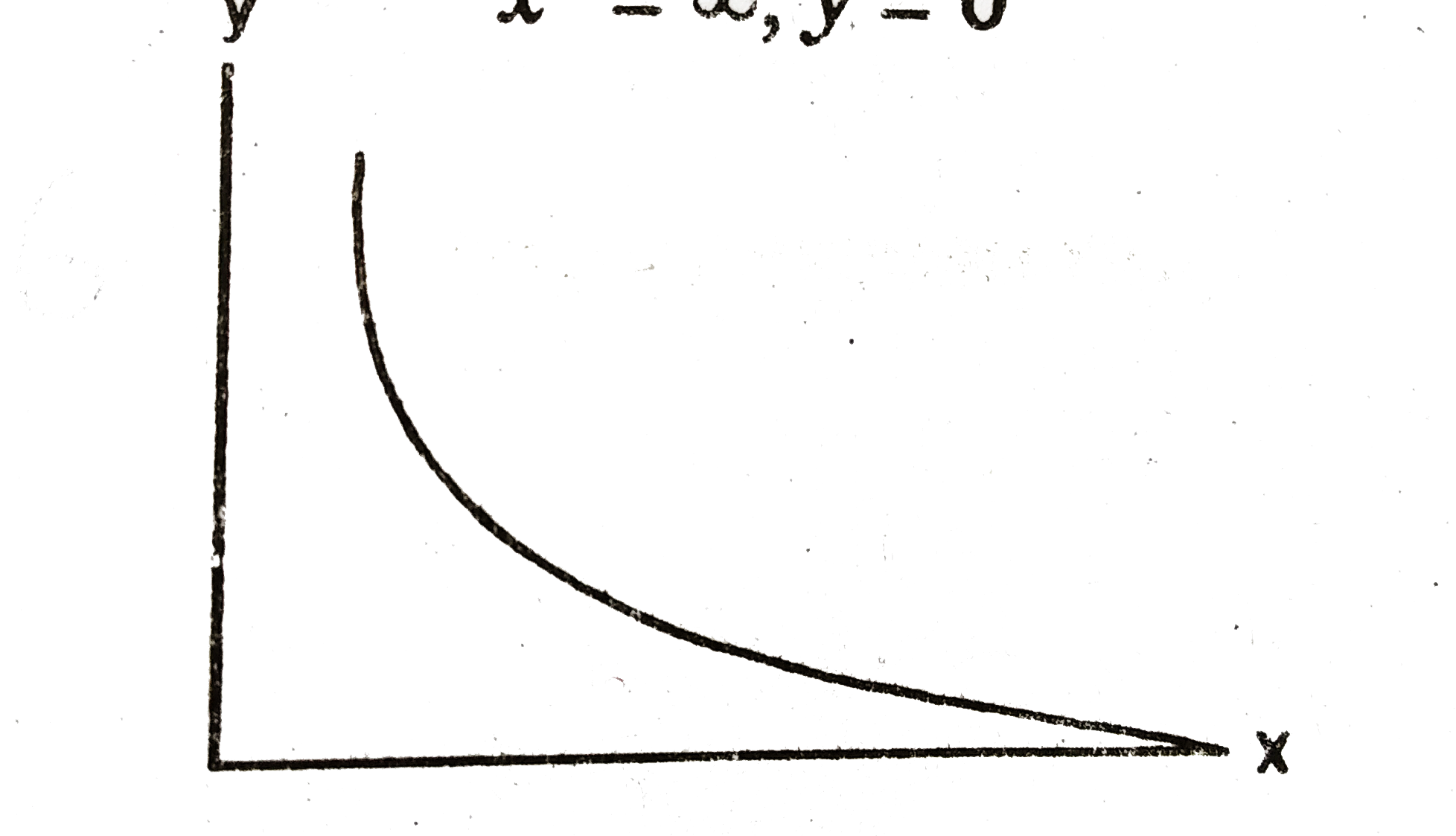Find the area bounded by the curve y=e−x the X-axis and the Y-axis.
The correct Answer is:A
Given function is
y=e−x<br>Whenx=0<br>y=e−0=1<br> x increases value of y decreases and only at x=oo
y=0

So, the required area can be founded out by integrating the functon from 0→∞.Area=∫∞_0e−xdx<br>=−[e−e−x00<br>=−[0−1]=1
Topper's Solved these Questions
- PHYSICS AND MATHEMATICSBOOK - HC VERMACHAPTER - PHYSICS AND MATHEMATICSEXERCISE - Objective 2
5 Videos
- NEWTON'S LAWS OF MOTIONBOOK - HC VERMACHAPTER - NEWTON'S LAWS OF MOTIONEXERCISE - Exercises
42 Videos
- REST AND MOTION : KINEMATICSBOOK - HC VERMACHAPTER - REST AND MOTION : KINEMATICSEXERCISE - Exercises
51 Videos
Similar Questions
Find the area bounded by the curve y=(4−x2) the y-axis and the lines y=0 y=3
View SolutionFind the area bounded by the curve y=xe−x2 , the x-axis, and the line x=c where y(c) is maximum.
View SolutionFind the area bounded by the curve y=−3|x|+2 and x-axis
View SolutionFind the area bounded by the curve y=4x−x2, the x-axis and the ordinates x=1 and x=3.
View SolutionFind the area bounded by the curve y=xex2 , x-axis and the ordinates x=0 and x=h.
View SolutionFind the area bounded by the curves y=|sinx|, the x-axis and the lines |x|=π.
View SolutionThe area bounded by the curve y=2x, the x-axis and the left of y-axis is (A) loge2 (B) loge4 (C) log4e (D) log2e
View SolutionFind the area bounded by the curve y2=4ax, X - axis and the lines x=0andx=a.
View SolutionCalculate the area bounded by the curve y=x(3−x)2 the x-axis and the ordinates of the maximum and minimum points of the curve.
View SolutionFind the area bounded by the curve y=(x+1)(x−1)(x+2) and the x-axis.
View Solution
